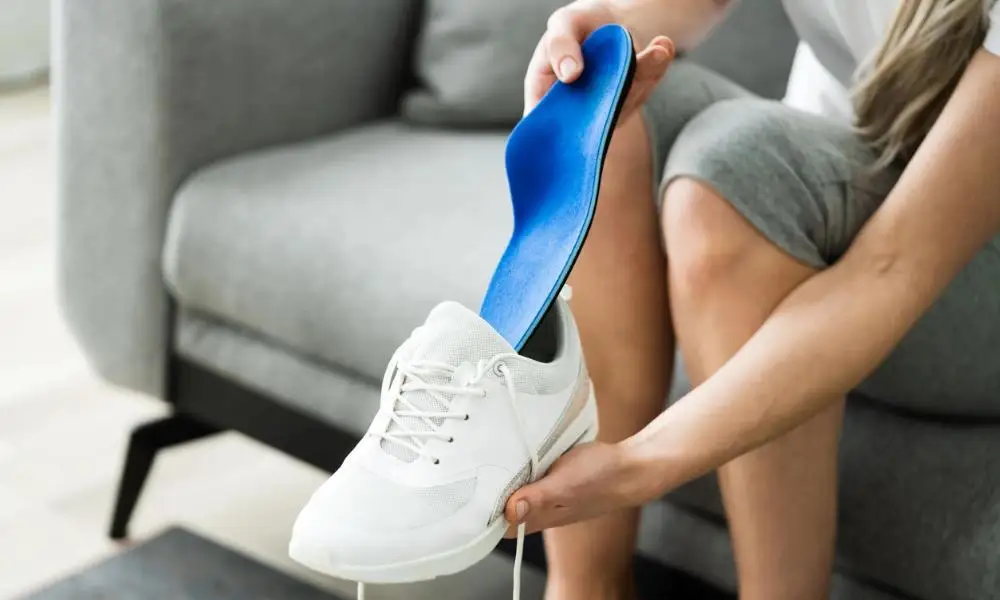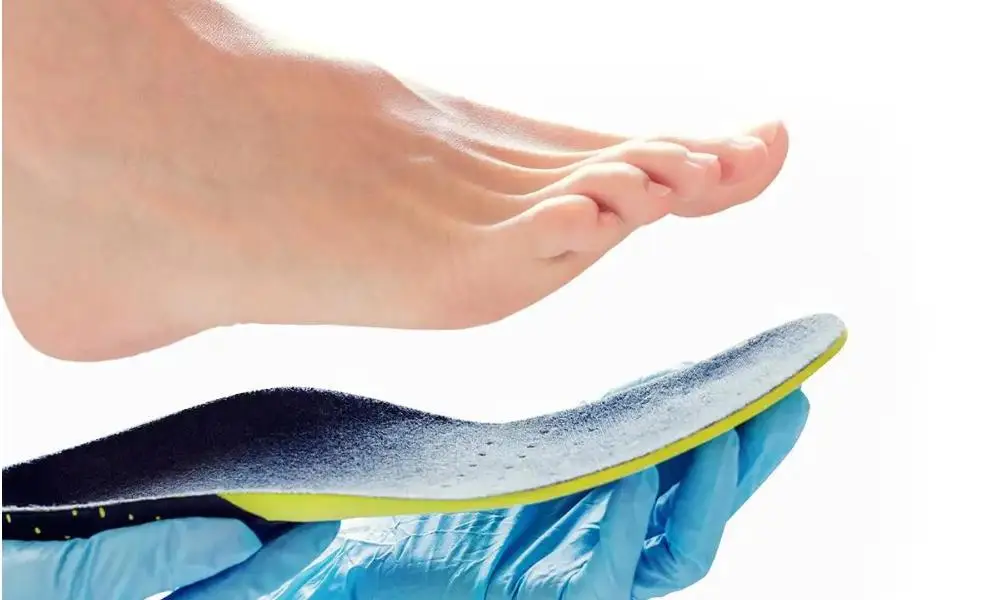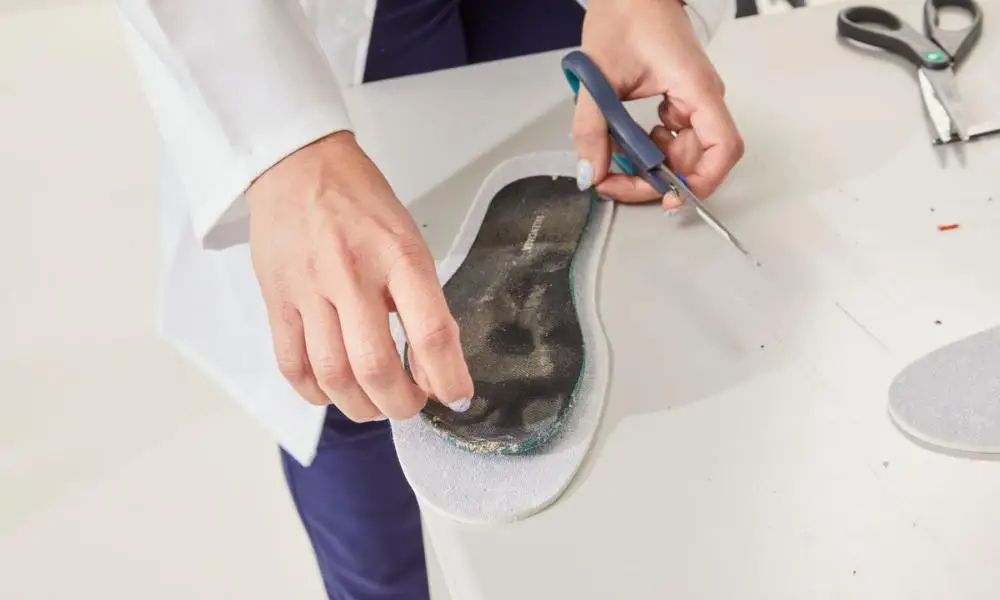
As an Amazon Associate I earn from qualifying purchases.
by ElenaStyle

As an Amazon Associate I earn from qualifying purchases.
When it comes to foot comfort and health, the role of insoles is often at the forefront of discussion. One intriguing question that arises in this context is: “Can you put two insoles in shoes?” This query reflects a common concern among individuals seeking enhanced comfort, better support, or a solution to specific foot-related issues.
In this exploration, we delve into the feasibility of using two insoles, weighing the potential benefits against the possible drawbacks.
Our journey will take us through expert opinions, practical considerations, and alternative solutions, aiming to provide comprehensive insights for those contemplating this unique approach to foot care.
Insoles, also known as footbeds or inserts, are removable layers inside shoes to provide extra cushioning, support, and a better fit. They come in various forms, such as foam, gel, or plastic, each designed to address different needs.
Insoles can enhance comfort, especially for people who stand or walk a lot, provide arch support for those with flat feet or high arches, and help alleviate pain from foot conditions like plantar fasciitis. They can also improve shoe fit and offer additional shock absorption, reducing stress on the feet and lower limbs.
Yes, you can wear shoes with two inserts, but it’s important to consider the fit of the shoe and the purpose of the inserts. Using two insoles may provide additional cushioning, support, or help adjust for differences in leg length or foot size. However, this practice is not universally suitable for everyone and should be approached with caution.
The primary concern when wearing two inserts is the fit of the shoe. Adding an extra insole can make the shoe tight, potentially leading to discomfort or reduced circulation in the foot.
It’s essential to ensure that the shoe has enough room to accommodate two insoles without causing undue pressure on the foot. Furthermore, the shoe’s original ergonomic design might be altered, which could affect the foot’s alignment and walking comfort.
Another consideration is the type and purpose of the insoles. For instance, combining a cushioning insole with an orthotic one might provide both comfort and support.
It’s crucial to select insoles that complement each other and are appropriate for your specific foot needs.
In cases of specific foot conditions or pain, consulting with a healthcare professional is advisable to determine the best approach for using multiple insoles
Also Read: Best Shoes for 5th Metatarsal Fracture

Considering two insoles in a single pair of shoes is a decision often driven by specific needs or conditions related to foot health and comfort. Here are some of the main reasons why individuals might opt for this approach:
For those who spend a lot of time on their feet, whether due to work or lifestyle, additional cushioning can provide significant relief. Two insoles can offer a softer footbed, reducing the strain and fatigue on the feet.
In cases where an individual has a slight difference in leg length, using an extra insole in one shoe can help balance out the discrepancy, leading to better posture and reduced discomfort.
Sometimes, especially with mass-produced footwear, finding the perfect fit can be challenging. If a shoe is slightly too large, adding an extra insole can help achieve a snugger, more secure fit, preventing slippage and blisters.
People suffering from foot conditions like flat feet, high arches, or plantar fasciitis may find that a single insole doesn’t provide adequate support or pain relief. Using two insoles, possibly combining different types (such as a cushioned insole with a supportive orthotic), can better address these issues.
Each foot can have different needs. In some instances, an individual might require more support or cushioning in one shoe than the other. Using two different types of insoles can help meet these varying requirements within the same pair of shoes.
Using two insoles in a single pair of shoes can offer certain benefits, but it’s essential to be aware of potential drawbacks and considerations:
Adding an extra insole can change the internal dimensions of the shoe, potentially leading to a tighter fit. This can cause discomfort, restrict foot movement, and even impede circulation, especially in shoes that were already a snug fit.
With more material inside the shoe, there’s less space for air circulation. This can lead to increased warmth and moisture, potentially causing issues like foot odor, increased sweating, or even fungal infections like athlete’s foot.
Shoes are designed with a specific structure and balance in mind. Adding another insole can alter the way the shoe functions, potentially affecting walking gait, balance, and the overall biomechanics of the foot.
Two insoles can exert additional pressure on the upper part of the shoe, leading to faster wear and tear. The increased stress on seams and materials can shorten the lifespan of the shoes.
When using two insoles, it’s important to regularly check and adjust them for optimal fit. Over time, insoles can compress or shift, necessitating regular inspection and potential replacement.
It can be challenging to find two insoles that work well together, especially if they are of different types or thicknesses. This might require trial and error, and in some cases, customization.
Also Read: Can You Wear Crocs To Work?

Fitting two insoles in a single pair of shoes properly requires careful consideration to ensure comfort and effectiveness. Here’s how to do it:
Choose insoles that complement each other. For instance, one could be for cushioning (like foam or gel) and the other for support (like a firmer orthotic insole). Ensure they are appropriate for your foot type and the issues you’re addressing.
Ensure that your shoe can accommodate two insoles without being too tight. Shoes with a removable existing insole or those with extra depth are more likely to have enough space for double insoles.
If the shoe has a removable existing insole, take it out first. Place the firmer insole (if using) at the bottom as a foundation. The softer, cushioning insole should go on top. This arrangement typically works best for both comfort and support.
If the insoles don’t fit perfectly, you may need to trim them. Use the original shoe insole as a template. Trace the outline onto the new insoles and cut with scissors for a precise fit. Be cautious and trim a little at a time to avoid cutting off too much.
Once the insoles are in place, put on the shoes and walk around. Check for any areas of discomfort or tightness. The shoe should feel snug but not overly tight, and there should be enough room for your toes to move freely.
Over time, insoles can compress or shift. Regularly check their condition and placement, and adjust or replace them as needed. This is particularly important when using two insoles, as they might wear out or lose effectiveness faster.
Pay attention to how your feet feel with the double insoles. If you experience discomfort, pain, or other foot issues, reconsider the insole combination or consult a foot specialist.
By carefully selecting, fitting, and maintaining double insoles, you can maximize the benefits while minimizing potential issues. However, if you have specific foot conditions or ongoing discomfort, seeking advice from a healthcare professional is advisable for tailored guidance

Some experts agree that doubling up on insoles can offer extra comfort and shock absorption, especially for individuals with specific foot problems like plantar fasciitis or flat feet.
However, many experts, including podiatrists and biomechanics specialists, warn against the risk of increased pressure and friction points leading to discomfort, blisters, and even gait imbalances.
Two inserts can significantly change the shoe’s internal volume and affect its intended support and flexibility, potentially compromising performance and biomechanics.
Experts’ recommendations:
Alternatives to using double insoles are available for those seeking additional foot comfort or support without overcrowding their shoes. Here are some viable options:
Custom-made orthotics are tailored to an individual’s specific foot structure and needs. They offer precise support and can address a variety of foot issues more effectively than standard insoles. Although they can be more expensive, their customized nature often makes them a better long-term solution for foot comfort and health.
There are high-quality single insoles designed for specific purposes, such as extra cushioning, arch support, or heel padding. These insoles are often more sophisticated in design than standard ones and can address specific needs without the need for doubling up.
Choosing shoes that are specifically designed for support or comfort can be an effective alternative. Many athletic and therapeutic shoes come with enhanced arch support, cushioning, and stability features built into their design.
In some cases, modifying the existing shoe might be a better solution. This can include adding heel lifts for leg length discrepancies or having a cobbler adjust the shoe for a better fit.
Sometimes, foot discomfort can be alleviated through foot and ankle strengthening and stretching exercises. This can help improve foot mechanics and reduce the need for additional insole support.
Before opting for any solution, it’s advisable to consult with a podiatrist or a foot health specialist. They can offer advice tailored to your specific foot condition and lifestyle needs, potentially suggesting treatments or interventions that could alleviate the need for double insoles.
These alternatives provide various ways to achieve foot comfort and support, addressing the root causes of discomfort or alignment issues without the drawbacks that might come with using two insoles in one shoe.
The decision to use two insoles in a single pair of shoes is one that should be made with careful consideration. While there are potential benefits such as increased comfort, improved support, and a customized fit, these must be balanced against the drawbacks of altered shoe fit, reduced breathability, and the possible impact on foot biomechanics.
It’s clear that what works for one person may not be suitable for another, and individual foot needs and conditions play a crucial role in determining the appropriateness of this approach. For those considering double insoles, consulting with a foot specialist is highly recommended.
The key lies in finding a solution that aligns with your specific needs, ensuring both comfort and health for your feet. Whether it’s through using two insoles, opting for custom orthotics, or selecting footwear with built-in support, the right choice can lead to a significant improvement in daily foot comfort and overall well-being.